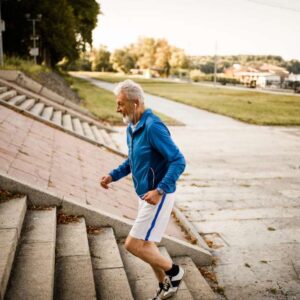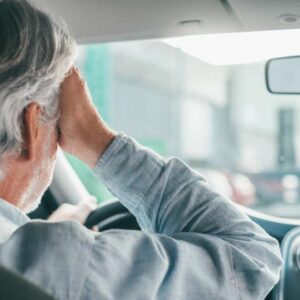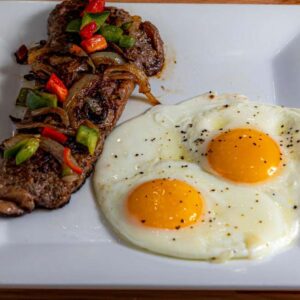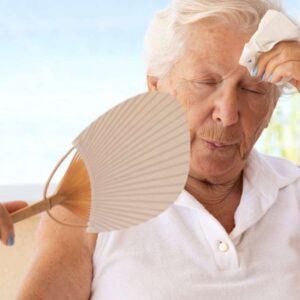
Hidden Harm of Daylight Savings
Daylight Saving Time is no big deal. It’s just an hour… it can’t affect that much. Right?
WRONG.
The truth is whether we’re “springing forth” or “falling back,” daylight saving time (DST) can change your life in small but harmful ways.
In fact, research reveals one common side effect that can negatively affect EVERY aspect of your life.
DST doesn’t just alter the time on our clocks.
Scientists warn this seemingly small change can impact on your overall health and mood in a BIG way.
Most of us are aware by now that “springing forward” is linked to an increased risk of heart attack, stroke, and accidents.
But when DST begins, there are also more depressive episodes, suicides, and hospital visits related to anxiety and depression.
You see, when the time shifts forward by one hour in the spring, the darker mornings can cause your melatonin and serotonin levels to drop—a hormone that’s linked to mood.
And folks who get up early may miss out on exposure to natural morning light, which is vital for keeping our mood balanced.
The start of DST gets all the attention. But on the flipside, the “fall back”—the return to standard time—is treated as if it’s no big deal.
The truth is, regardless of whether DST is starting or ending, it can STILL mess with your mood. And that can have an impact on EVERY aspect of your life.
To begin with, an alteration in your sleeping pattern, even by one hour, isn’t as insignificant as it sounds.
BOTH “gaining” or “losing” an hour can leave you feeling groggy and out of sorts as it messes with your cortisol (“stress” hormone), serotonin (“feel good” hormone), and melatonin (“sleep” hormone) levels.
Even worse, bumping the clock forward or backward wreaks HAVOC with your circadian rhythms. These biological clocks guide your normal wake sleep cycle and other bodily functions.
So, the misalignment caused by a shifting clock… backward or forwards… can affect your sleep cycle, mood, and general well-being.
For example, many folks have trouble going to sleep and staying asleep after the time changes, which can last for weeks afterward. And, of course, insomnia messes with your mood, making you feel short-tempered, anxious, and depressed.
When we return to standard time in the fall, you may already be battling mood issues if you have seasonal affective disorder (SAD). And this time shift can knock your brain chemicals even further out of balance, worsening depression.
The good news is that most of these risks drop again after a few weeks as you adjust to the new time.
You can take a few simple steps to ease the adjustment back to standard time this year and reduce your risk of mood and other problems.
Under federal law, DST ends at 2 AM on the first Sunday in November. This year, that makes it fall on November 5th.
- Start preparing for the time change four days before by shifting your bed and wake time 15 minutes forward each night. For example, if you typically go to bed at 10 PM and wake up at 6 AM, then four days before, you’ll go to bed at 10:15 and wake up at 6.15. Then, three days before, you turn in at 10:30 and wake up at 6:30, and so on. Then, on November 5th you go to bed at 11 PM but wake up at your usual 6 AM. This will ease the transition and help your body adjust to the new time once it strikes.
- After the change, you may still feel sleepy an hour earlier than usual and hungrier an hour before your normal meal times. But stick to your regular schedule to help your body adjust sooner and avoid major mood problems.
- After the change, try stepping outside daily when the sun rises, exposing yourself to 15 to 20 minutes of morning sunlight. And try heading out again before sunset to get as much daylight exposure as possible. This will help fight off fall sleepiness and reset your circadian rhythms.
- Surprisingly, recent research finds that prebiotics can help people adjust to a new time schedule. So, if you aren’t taking one, consider starting now.
- If you are battling insomnia after the clock shifts, a melatonin supplement could help you get your sleep schedule back on track.
And another thing…
Here’s what else we’ve covered this week in Living Well Daily…
Common Food Additive THREATENS Your Heart
Scientists say a hidden ingredient found in the majority of processed foods is putting our HEARTS in danger.
TAME Your Irregular Heartbeat with This FIX
What causes atrial fibrillation has long been a mystery. But now, a new study sheds some light on the underlying cause (and a FIX!).
20-Minute Trick SLASHES Depression Risk
New research reveals THIS 20-minute trick can SLASH your depression risk. And, even better, it couldn’t be easier to do.
“Magical Mineral” Trick SLASHES Heart Risk
Painful and dangerous peripheral artery Disease, or PAD, affects 1 in 20 Americans over 50. But new research revealed a surprising way to SLASH your risk.
Beat BACK the Fall Blues (No Drugs Required!)
Fall might sound picture-perfect, but for many, the new season ushers in feelings of melancholy. But there are proactive ways to fend off the fall blues. And it doesn’t require turning to Big Pharma’s risky (often ineffective) antidepressants.
Common Meds Send SUDDEN Heart Attack Risk Soaring
Warning issued for diabetics. Startling new research reveals some common drugs could raise the risk of a sudden heart attack.
SLASH Stomach Cancer Risk 70% with ONE Change
Researchers identified an affordable natural solution that could reduce the risk of stomach cancer by up to 70% in high-risk individuals.
P.S. Hit the “reset button” for better sleep, mood, and more with this belly secret!
Sources:
“Local Time FAQs: Daylight saving time rules, exceptions and legislation. Time zones, borders, abbreviations and relationship to U.S. postal zip codes,” National Institute of Standards and Technology, Physical Measurement Laboratory, NIST. gov
Written By Dr. Scott Olson, ND
Nearly 25 years ago, failed mainstream medical treatments left Dr. Olson in constant pain – and his health in ruins. And that’s when he did something REVOLUTIONARY. He began his career in medicine – and dedicated his life to uncovering the true, underlying causes of disease.
Through his innovative medical practices in Tennessee and Colorado, Dr. Olson has helped cure countless seniors from across America of arthritis… heart disease… diabetes… and even cancer. All without risky prescription drugs or painful surgeries.
View More Free Articles
A New Reason to Ditch Processed Junk
If you’ve ever walked the inside aisles of your local grocery store and thought, “This is all just junk,” your instincts were spot on. A new study published in the journal Thorax just added another red flag to the list of dangers linked to ultra-processed food—a 41 percent higher risk of lung cancer. That’s right....
When Being Winded on Stairs Is Serious (And When It Isn’t)
I had an athlete visit me recently because he experienced shortness of breath while climbing stairs. He is in great shape, so he was worried about what it might mean. “Doc,” he said, “I run five miles three times a week. Why am I huffing and puffing after two flights of stairs?” His concern is...
Study EXPOSES Hidden Danger Lurking in Your Car
We think of our homes and cars as safe havens. But according to a startling new study, they may be flooding your lungs with microscopic plastic particles—every single day. Researchers in France recently found that adults inhale an average of 68,000 microplastic particles daily from indoor air alone. To put that in perspective, that’s about...
Mailbag: Is Modern Food Making You Snore?
“What can cause snoring, and is there a way to correct this issue?” —Seeking Silence Hi Seeking, Snoring happens when the soft tissues in your throat relax and vibrate as air passes through during sleep. While several factors can cause snoring—from sleep position to nasal congestion—I want to share one trigger that might surprise you....
Simple Food Swap SLASHES Dementia Risk 28%
Let’s be honest… who would jump at the chance to cut their dementia risk by 28 percent. And no, you don’t need to run marathons, survive on broccoli, or learn to play the zither (whatever that is) to make it happen. All it takes is one easy swap—something that’s probably already in your refrigerator. Researchers...
This SMART Floss Exposes Hidden Health Danger
Scientists have created dental floss that doesn’t just clean between your teeth—it also tracks your stress while you’re flossing. Now, I know what you’re thinking… “Great—now even flossing is going to stress me out by telling me how stressed I am.” But this fascinating new tool from Tufts University could be a game-changer for understanding...
Is This "Safe" Sweetener Damaging Your Brain?
The headlines are alarming… “Popular Sugar Substitute Linked to Brain Cell Damage” and “Erythritol Could Damage Critical Brain Barrier” are just two of the dozens I’ve spotted recently. But before you toss every sugar-free product in your pantry, let’s take a closer look at what this study actually shows—and what it doesn’t. The latest research...
This Summer Threat Could SPIKE Your Blood Sugar
Picture this… It’s another scorching hot summer day. You crank up the air conditioning while watching the weather forecast, which predicts yet another “record-breaking” heat wave. It’s starting to feel like just another miserably uncomfortable summer. But what you might not realize is that—if you have diabetes—those rising temps could do far more damage to...
Move Over Yogurt—5 Foods That Pack MORE Probiotics
Let’s talk about your gut. The microbiome is the collection of trillions of bacteria and other tiny organisms that live in and on your body—especially in your gut—and help keep you healthy. I’ve written often about how vital it is to maintain a healthy microbiome. And you might have dutifully added yogurt to your shopping...
Is Your Heart Older Than YOU?
Maybe you feel young for your age. Good energy, decent sleep, eating your veggies. But what if I told you your heart might be a decade older than the rest of you? That’s exactly what researchers at Northwestern University found in a new study published in JAMA Cardiology. The average American woman’s heart is about...









